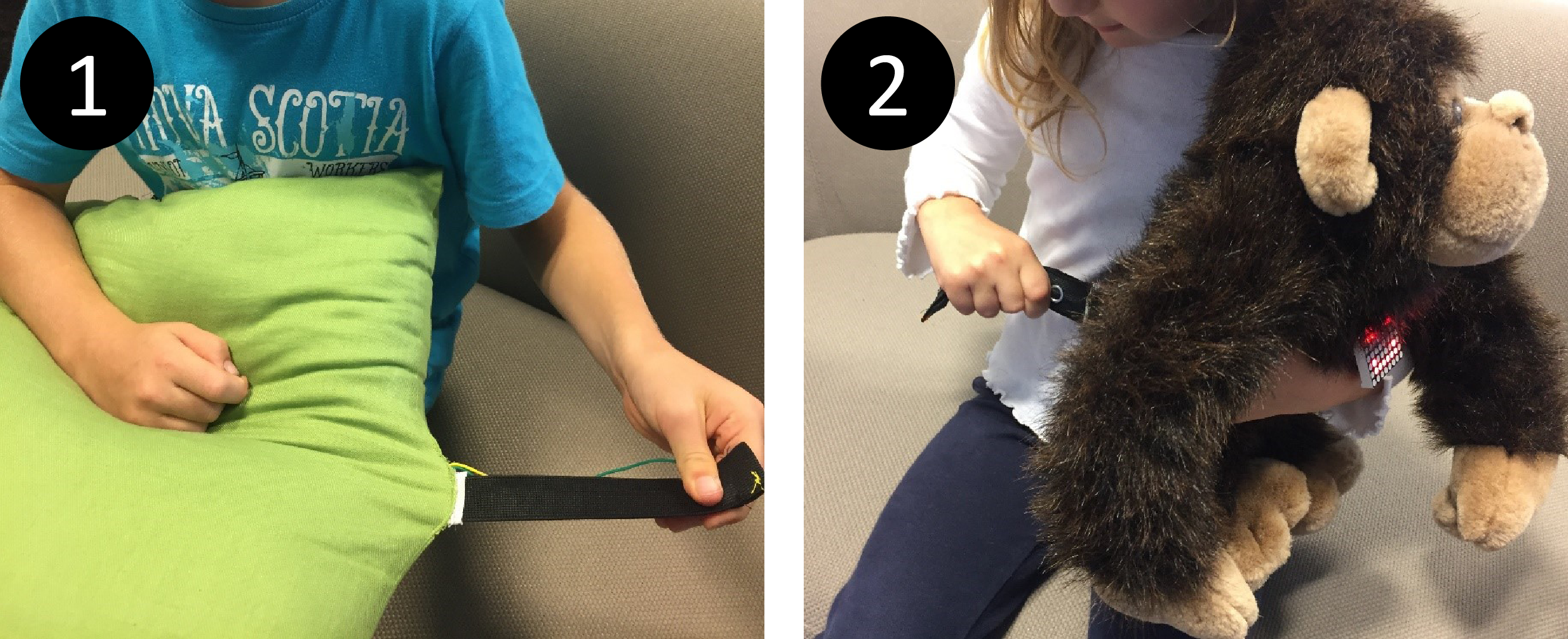Enabling Fabric-Based Interactions through Rapid Fabrication of Textile Stretch Sensors
We present StretchEBand, stitch-based elastic sensors, which have the benefit of being manufacturable with textile craft tools that have been used in homes for centuries. We contribute to the understanding of stitch-based stretch sensors through four experiments and one user study that investigate conductive yarns from textile and technical perspectives, and analyze the impact of different stitch types and parameters. The insights informed our design of new stretch-based interaction techniques that emphasize eyes-free or causal interactions. We demonstrate with StretchEBand how soft, continuous sensors can be rapidly fabricated with different parameters and capabilities to support interaction with a wide range of performance requirements across wearables, mobile devices, clothing, furniture, and toys.
INTRODUCTION
Designers and technologists are actively developing new types of electronic textiles and smart clothing. By combining textile processing methods with conductive materials like fibers, yarns and fabrics, we can open up an unlimited space of sensing possibilities. While related work mostly tends to focus on how to implement smart fabric sensors, we are mainly interested in stretch-based textile sensing technology that can enhance or augment everyday objects. Summarizing, the main contributions of this paper are :
- Analysis and insights needed to fabricate and use a wide array of stitched sensors gained through four experiments and one user study.
- Investigation of conductive yarns from both textile and technical perspectives. We analyze the impact of different stitch types and parameters.
- Five interaction techniques, which arise from combining stretch sensing with touch, pressure, and lift gestures.
- A set of application scenarios that highlight the novel interaction possibilities.
- Analysis of a quantitative evaluation of study participants’ reactions and feedback on our interaction techniques and applications, which we hope will help inform future work.
Satomi and Perner-Wilson and Buechley present many ways on how to integrate fabric, painted or knitted sensors. Hence, despite the diverse range of existing techniques for creating stretch-sensors, there lacks an approach for creating stretch-sensors that are comfortable to wear, quick to fabricate, and easy to integrate into existing objects. StretchEBand is designed to fill this gap by direct embedment into an existing elastic base material, visible discreteness and scalability to conform to an existing object’s form-factor, all without requiring any new layers (i.e. new physical constraints) to be added or imposed on the object.




